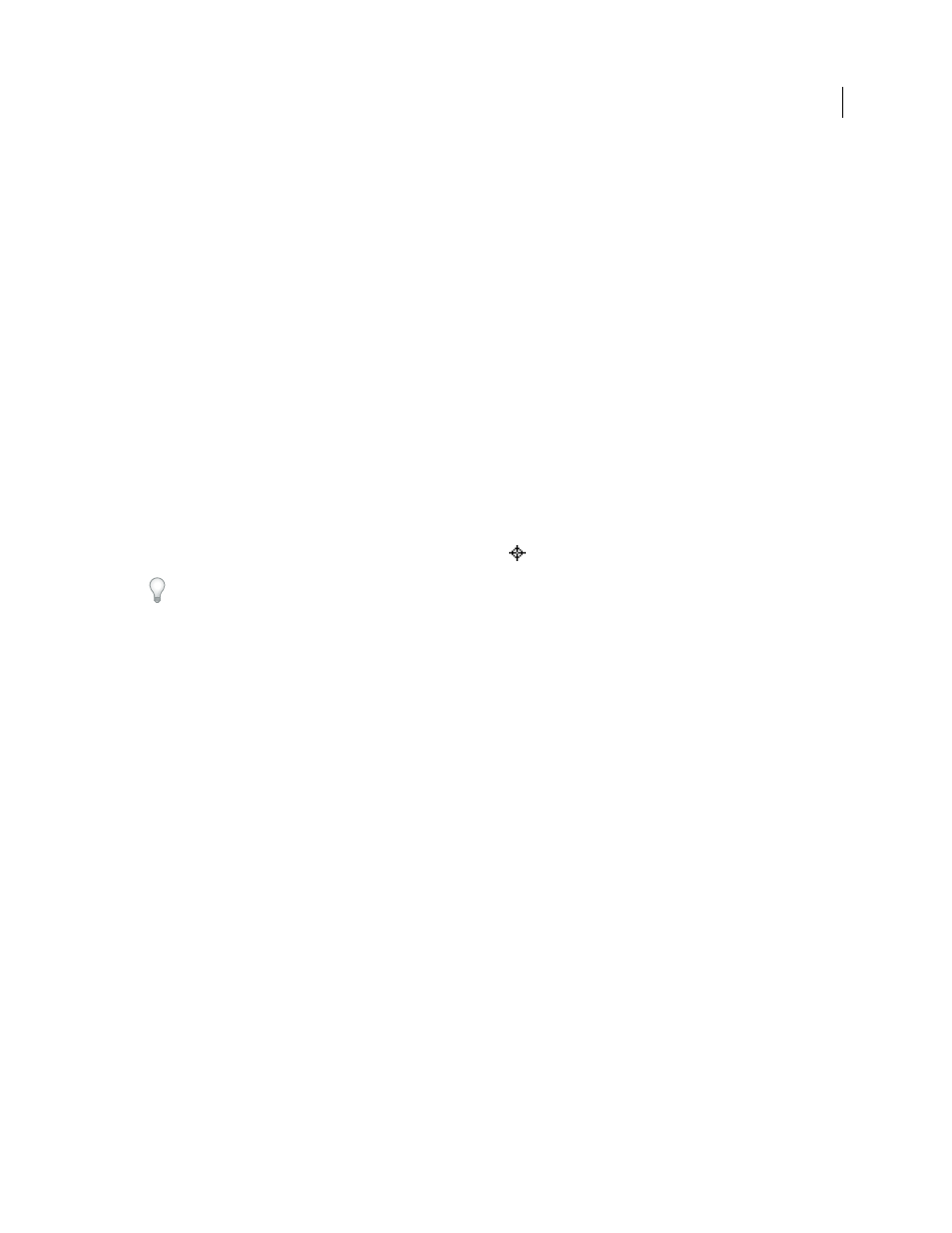Emulsion and image exposure, Print an object on all plates, Printer’s marks and bleed – Adobe Illustrator CS4 User Manual
Page 419: About printer’s marks

412
USING ADOBE ILLUSTRATOR CS4
Printing
Emulsion and image exposure
Emulsion refers to the photosensitive layer on a piece of film or paper. Up (Right Reading) means that type in the image
is readable (that is, “right reading”) when the photosensitive layer is facing you. Down (Right Reading) means that type
is readable when the photosensitive layer is facing away from you. Normally, images printed on paper are printed Up
(Right Reading), whereas images printed on film are usually printed Down (Right Reading). Check with your print
shop to determine which emulsion direction it prefers.
To tell whether you are looking at the emulsion side or the nonemulsion side (also referred to as the base), examine
the final film under bright light. One side appears shinier than the other. The dull side is the emulsion side; the shiny
side is the base.
Image exposure refers to whether artwork prints as a positive or negative image. Typically, print shops require negative
film in the United States and positive film in Europe and Japan. If you are unsure about which image type to use,
consult your print shop.
Print an object on all plates
If you want to print an object on all plates in the printing process, including spot-color plates, you can convert it to a
registration color. Registration marks, trim marks, and page information are automatically assigned registration colors.
1
Select the object.
2
In the Swatches panel, click the Registration color swatch
, located in the first row of swatches, by default.
To change the on-screen appearance of the registration color from the default black, use the Color panel. The color
you specify will be used for representing registration-colored objects on the screen. These objects will always print as
gray on composites and as an equal tint of all inks in separations.
Printer’s marks and bleed
About printer’s marks
When you prepare artwork for printing, a number of marks are needed for the printer device to register the artwork
elements precisely and verify correct color. You can add the following kinds of printer’s marks to your artwork:
Trim Marks
Fine (hairline) horizontal and vertical rules that define where the page should be trimmed. Trim marks
can also help register (align) one color separation to another.
Registration Marks
Small targets outside the page area for aligning the different separations in a color document.
Color Bars
Small squares of color representing the CMYK inks and tints of gray (in 10% increments). Your service
provider uses these marks to adjust ink density on the printing press.
Page Information
Labels the film with the name of the artboard number, the time and date of printout, the line screen
used, the screen angle for the separation, and the color of each particular plate. These labels appear at the tops of the
images.
